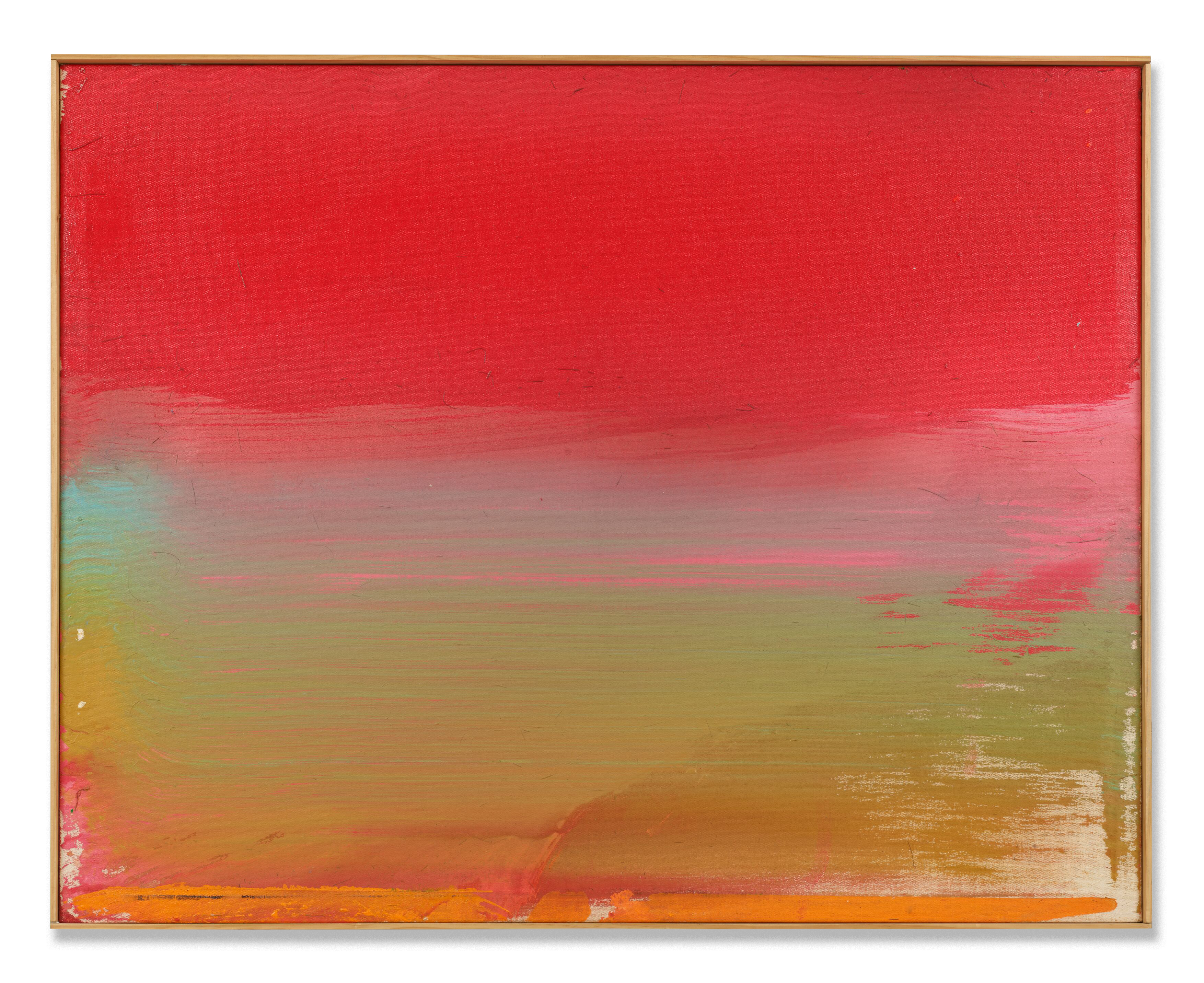Ed Clark
Avignon Red
Avignon Red
Price available upon request
2006
Acrylic on canvas
80.3 x 101 x 4.4 cm / 31 ⅝ x 39 ¾ x 1 ¾ in (framed)
‘I think every artist wants to create something beautiful in the world.’—Ed Clark [1]

Painted in 2006, Ed Clark’s exuberant ‘Avignon Red’ (2006) exemplifies his exploration in abstract form, color and materiality that, over the course of his decades-long practice, expanded the language of abstract expressionism. With its titular nod to the south of France, this painting sublimates Clark’s particular regard for place. Inspired by the temporal shifts in light, mood, palette and atmosphere of his immediate surroundings, he developed a tendency to title certain works according to a memory of a location, lending a particular emotional resonance to the spirited visual field that is ‘Avignon Red.’
Clark did in fact travel to Avignon in 2006, absorbing his environment onto the canvas in surges of bold cadmium red, leading into a register of his signature pink, overlapped with an aqueous blue, chartreuse green and fiery orange. [2] While effectively removing the trace of the paintbrush—and therefore the artist’s hand—Clark’s swift, vigorous gestures of pushing paint with a wide brush broom revealed the spontaneity of his medium. He created color fields that evoke colliding elements—earth, wind, fire and water—with pigments that appear to permeate and soar across the canvas, underscoring the connection between creative act and nature.
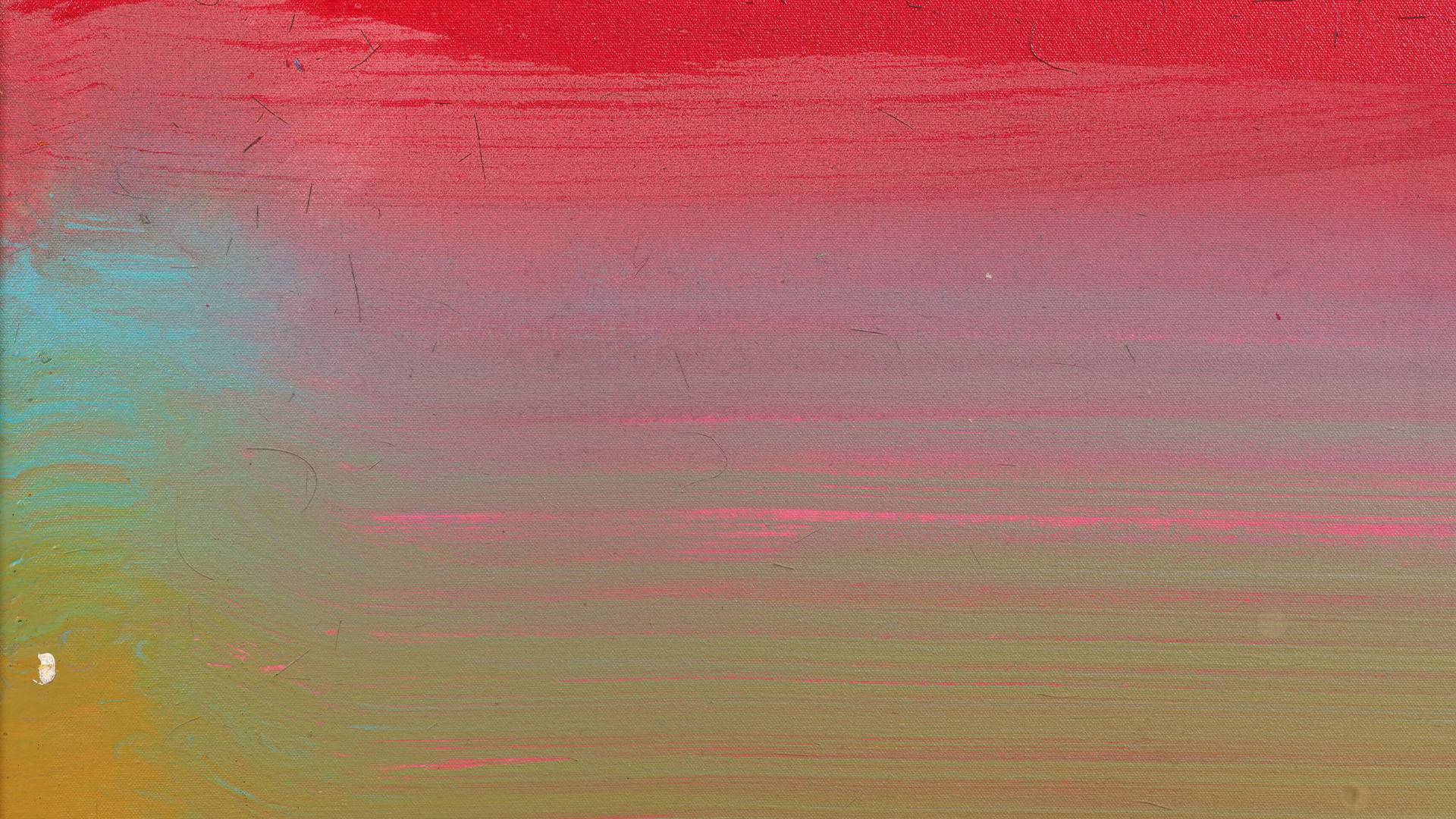
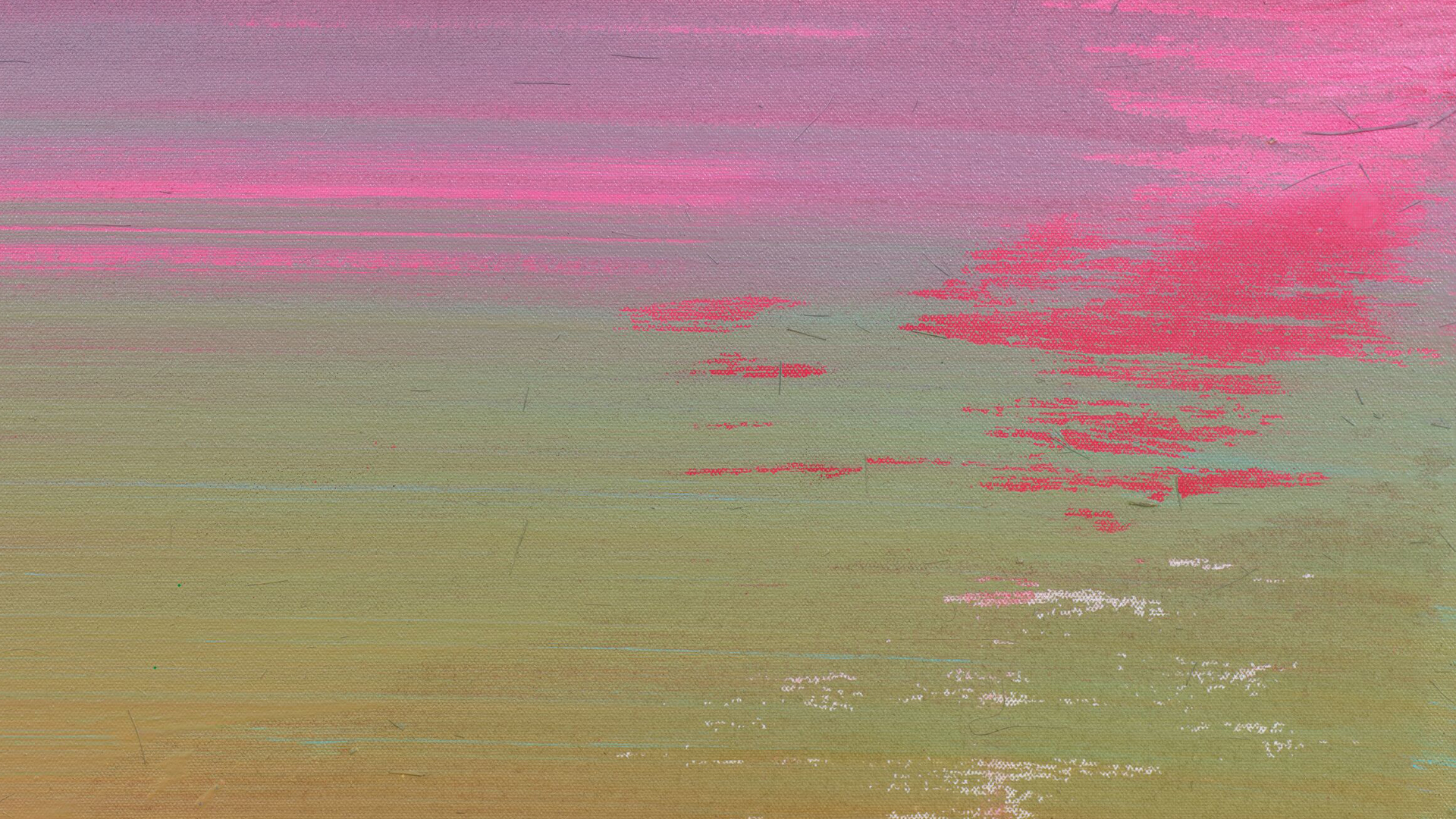
The importance of France in Clark’s personal and artistic history cannot be overemphasized. His early Parisian period in the 1950s was one of tremendous fermentation, and found him internalizing the works of Monet, Matisse and Nicolas de Staël, as well as fraternizing within a circle of American expatriates that included Beauford Delaney, Sam Francis and Joan Mitchell. It was here that he received his first critical success and ingeniously combined aspects of European and American post-war abstraction, ultimately leading to his formal breakthrough, as he called it: ‘the big sweep.’
Clark was a consummate traveler and produced work in almost every location he visited, but France held a unique place in his life and his art. From the 1980s until 2015, he continually returned to the country, spending his summers Paris and his winters in New York. Noting the country’s distinctive quality of light and color, he stated: ‘There’s something about France—the angle of the sun or something. It gets into your unconscious a little bit.’ [3] Even in the final stages of his career, Clark’s experimentations with pure color and the physicality of paint yielded remarkable creative renewal, radiating from one work to the next, a perpetual drive and luminosity made manifest and momentous.
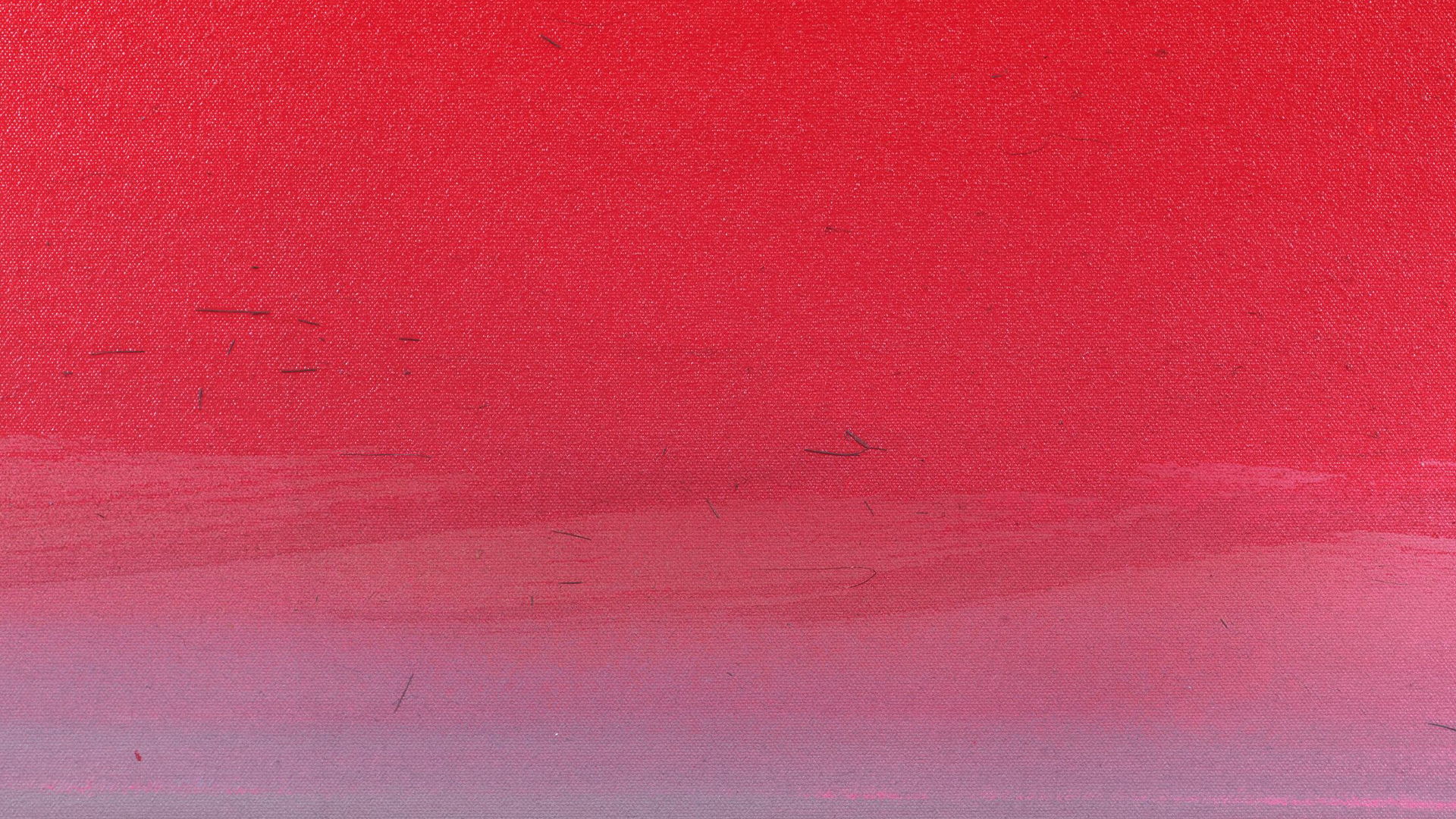
About the artist
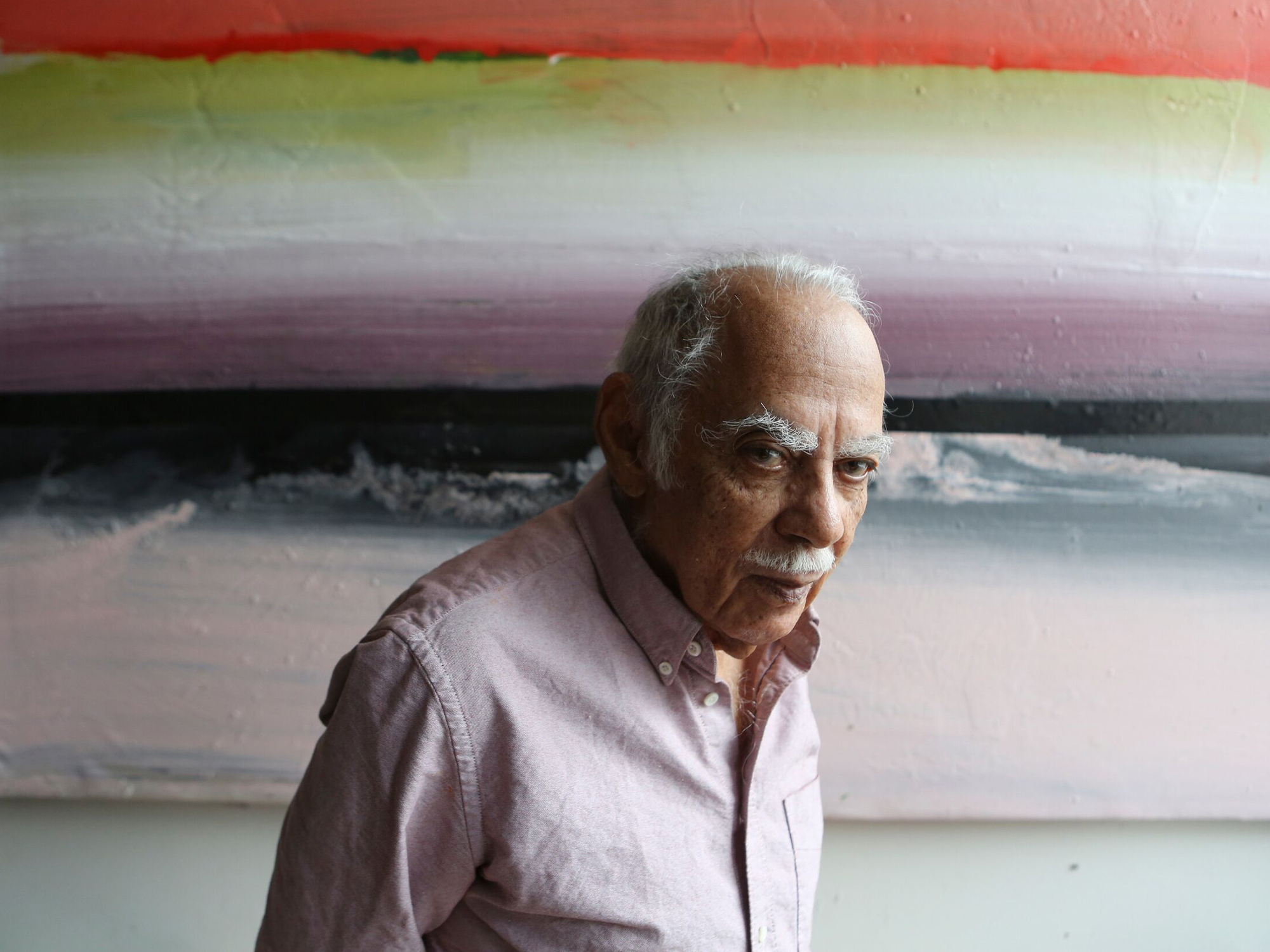 Born in New Orleans in 1926 and raised in Chicago, Ed Clark emerged in the 1950s as a pioneer of the New York School. His advancements have an important place in the story of modern and contemporary art: in the late 1950s he was the first American artist credited with exhibiting a shaped canvas, an innovation that continues to reverberate today. His search for a means to breach the limitations of the conventional paintbrush led him to use a push broom to apply pigment to a canvas laid out on the floor. Defying the discrete categories of gestural and hard-edged abstraction, Clark masterfully interwove these approaches into a unique form of expressionism.
Born in New Orleans in 1926 and raised in Chicago, Ed Clark emerged in the 1950s as a pioneer of the New York School. His advancements have an important place in the story of modern and contemporary art: in the late 1950s he was the first American artist credited with exhibiting a shaped canvas, an innovation that continues to reverberate today. His search for a means to breach the limitations of the conventional paintbrush led him to use a push broom to apply pigment to a canvas laid out on the floor. Defying the discrete categories of gestural and hard-edged abstraction, Clark masterfully interwove these approaches into a unique form of expressionism.




